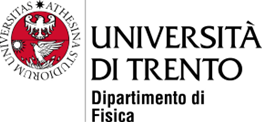For nuclear theorists, the overarching challenge is to develop a comprehensive description of nuclei and their reactions, grounded in the fundamental interactions between the constituent nucleons with quantifiable uncertainties to maximize predictive power. As experimental frontiers have shifted to the study of rare isotopes, the predictive power of successful phenomenological approaches like the shell model and density functional theory is challenged by the scarcity of nearby experimental data to constrain model parameters. Therefore, it is expected that few-body and many-body methods will play an increasingly prominent role to help improve the predictive power of such “data driven” methods as experiment moves deeper into largely unexplored regions of the nuclear chart.

To understand why nuclear matter is stable, and thereby shed light on the limits of nuclear stability, is one of the overarching aims and intellectual challenges of basic research in nuclear physics. To relate the stability of matter to the underlying fundamental forces and particles of nature as manifested in nuclear matter, is central to present and planned rare isotope facilities. From a theoretical standpoint, this involves understanding how the basic building blocks of Nature interact and conspire to build up atomic nuclei as we know them, with the aim to understand what makes visible matter stable. The theoretical efforts span from methods like lattice quantum chromodynamics, via effective field theories to many-body theories applied to atomic nuclei and infinite nuclear matter. All these methods rely on theoretical approximations whose applicabilities are often limited by the dimensionality of the specific problem being studied. In recent years, there has been considerable progress in developing quantum-computing algorithms applied to quantum many-body systems, with the hope to circumvent many of the classically intractable problems.
This Nuclear Talent school aims at bringing together the efforts of nuclear many-body theorists, quantum information theorists, and mathematicians in order to present and discuss algorithms for studying nuclear systems using recent progress in quantum information theory.
Supporting Institutions


